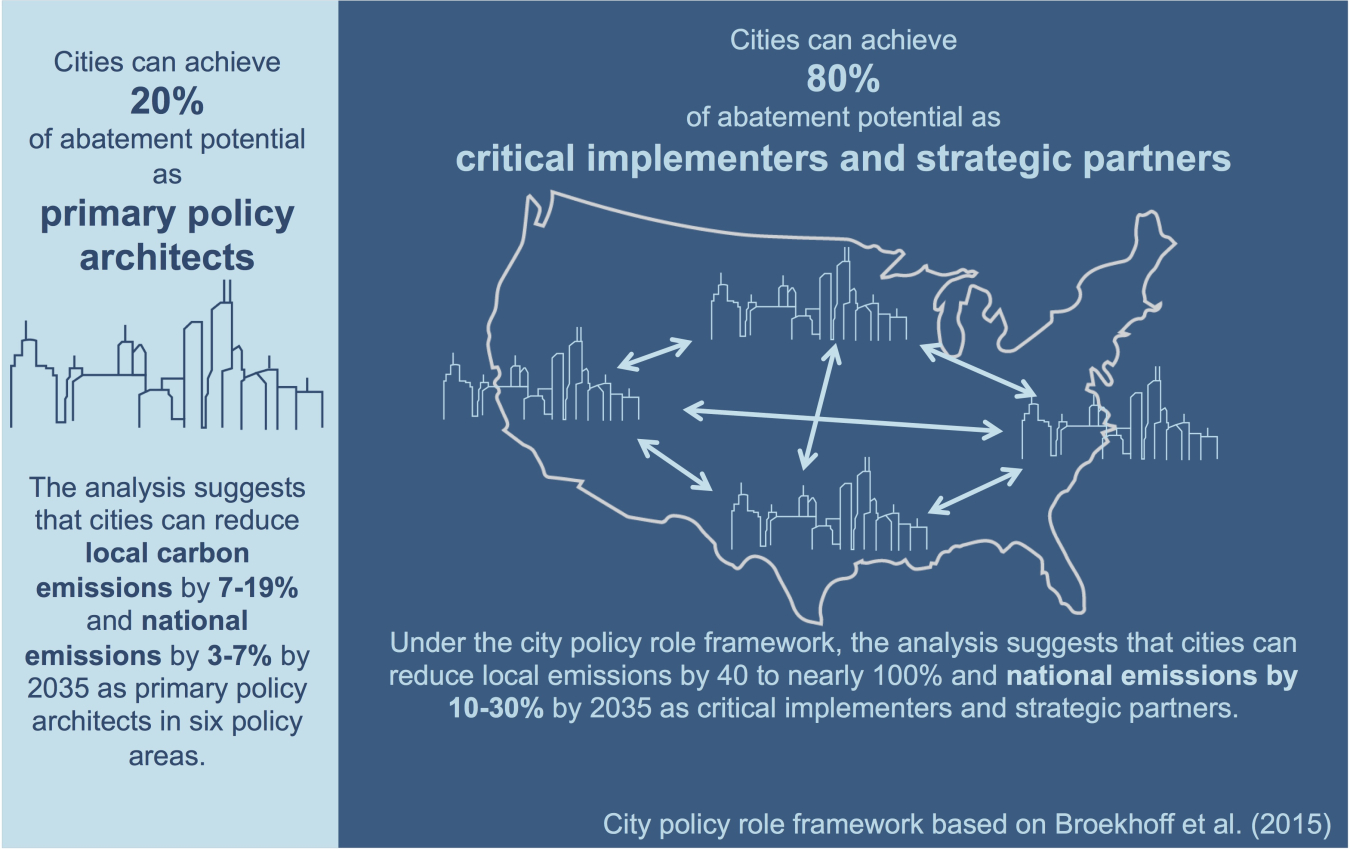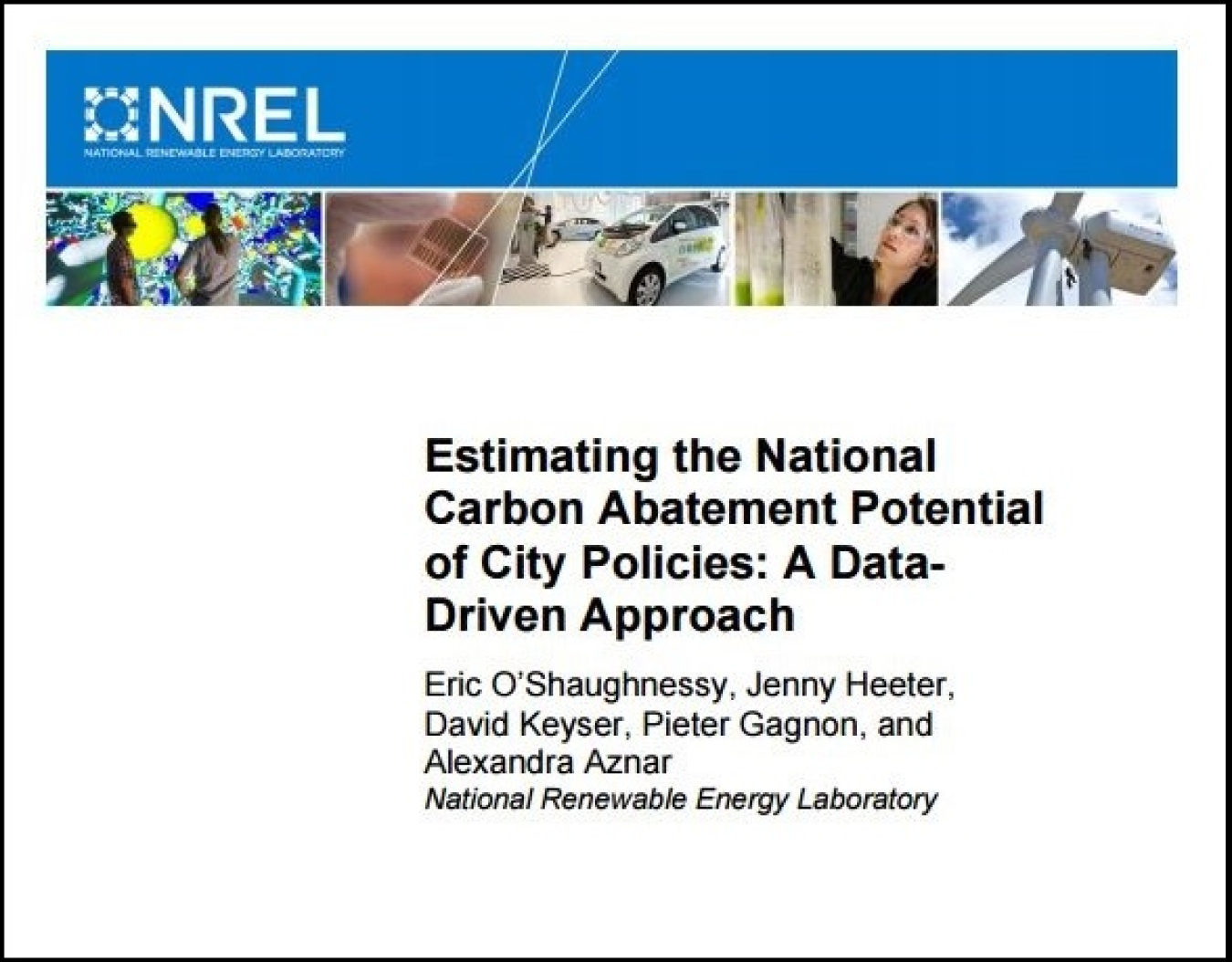View and download the technical report from the NREL website.

See the full-size infographic and more details about the study on the summary page.
Cities are increasingly taking actions such as building code enforcement, urban planning, and public transit expansion to reduce emissions of carbon dioxide in their communities and municipal operations. However, many cities lack the quantitative information needed to estimate policy impacts and prioritize city actions in terms of carbon abatement potential and cost-effectiveness. This report fills this research gap by providing methodologies to assess the carbon abatement potential of a variety of city actions. The methodologies are applied to an energy use data set of 23,458 cities compiled for the U.S. Department of Energy’s City Energy Profile tool.
The analysis estimates the national carbon abatement potential of the most commonly implemented actions in six specific policy areas. The results of this analysis suggest that, in aggregate, cities could reduce nationwide carbon emissions by about 210 million metric tons of carbon dioxide (MMT CO2) per year in a "moderate abatement scenario" by 2035 and 480 MMT CO2/year in a "high abatement scenario" by 2035 through these common actions typically within a city’s control in the six policy areas. The aggregate carbon abatement potential of these specific areas equates to a reduction of 3%-7% relative to 2013 U.S. emissions. At the city level, the results suggest the average city could reduce carbon emissions by 7% (moderate) to 19% (high) relative to current city-level emissions. City carbon abatement potential is sensitive to national and state policies that affect the carbon intensity of electricity and transportation. Specifically, the U.S. Clean Power Plan and further renewable energy cost reductions could reduce city carbon emissions overall, helping cities achieve their carbon reduction goals.

